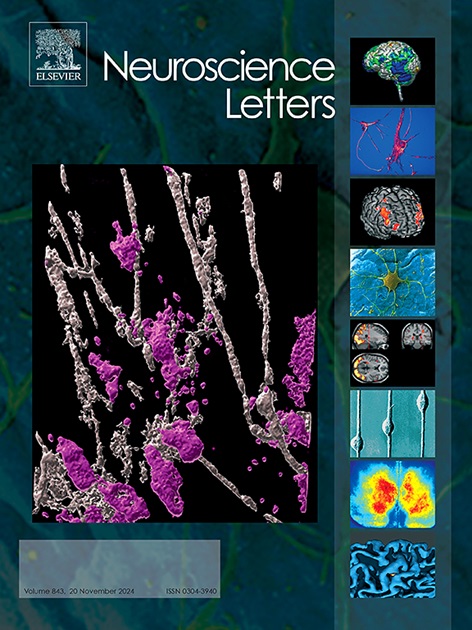MiR-222-3p通过PP2A-AKT信号通路调节雄性小鼠背侧纹状体中甲基苯丙胺诱导的行为致敏。
IF 2
4区 医学
Q3 NEUROSCIENCES
引用次数: 0
摘要
药物成瘾是一种慢性反复发作的脑部疾病。我们之前的研究表明,甲基安非他明(METH)致敏小鼠背纹状体(DS)中磷酸酶2A (PP2A/B)的B亚基增加。有趣的是,研究表明PP2A/B也可以与microRNA (miRNA)相互作用。在这项研究中,我们研究了已经报道的七种可能与PP2A/B相互作用的miRNAs,我们的结果显示,在甲基甲醚致敏小鼠的DS中,miR-222-3p显著降低。我们进一步利用双荧光素酶报告基因法阐明miR-222-3p与PP2A/B mRNA之间的调控关系,并构建腺相关病毒(adeno-associated virus, AAV)在DS中过表达miR-222-3p,进一步研究miR-222-3p对甲基甲醚诱导的行为致敏的影响。我们的研究结果表明,miR-222-3p确实与PP2A/B mRNA相互作用,过表达的miR-222-3p可以显著减弱甲基醚诱导的行为致敏。同时,过表达miR-222-3p可以逆转甲基醚致敏小鼠DS中PP2A-AKT信号通路的变化。我们的研究结果表明,在DS中过表达miR-222-3p可能通过PP2A-AKT信号通路减弱meth诱导的行为致敏。本文章由计算机程序翻译,如有差异,请以英文原文为准。
MiR-222-3p regulates methamphetamine-induced behavioral sensitization through PP2A–AKT signaling pathway in the dorsal striatum of male mice
Drug addiction is a chronic and recurrent brain disease. Our previous research demonstrated that the B subunit of phosphatase 2A (PP2A/B) increased in the dorsal striatum (DS) of methamphetamine (METH)-sensitized mice. Interestingly, studies indicate that PP2A/B can also interplay with microRNA (miRNA). In this study, we investigated seven miRNAs that have been reported to potentially interplay with PP2A/B, and our results showed that miR-222-3p significantly decreased in the DS of METH-sensitized mice. We further used dual-luciferase reporter assay to clarify the regulatory relationship between miR-222-3p and PP2A/B mRNA, and we also constructed adeno-associated virus (AAV) to overexpress miR-222-3p in the DS to further examine the influence of miR-222-3p on METH-induced behavioral sensitization. Our results demonstrated that miR-222-3p did interplay with PP2A/B mRNA and overexpressed miR-222-3p could significant attenuate METH-induced behavioral sensitization. At the same time, overexpressed miR-222-3p could reverse the change in the PP2A–AKT signaling pathway in the DS of METH-sensitized mice. Our results indicate that overexpression of miR-222-3p in the DS might attenuate METH-induced behavioral sensitization through the PP2A–AKT signaling pathway.
求助全文
通过发布文献求助,成功后即可免费获取论文全文。
去求助
来源期刊

Neuroscience Letters
医学-神经科学
CiteScore
5.20
自引率
0.00%
发文量
408
审稿时长
50 days
期刊介绍:
Neuroscience Letters is devoted to the rapid publication of short, high-quality papers of interest to the broad community of neuroscientists. Only papers which will make a significant addition to the literature in the field will be published. Papers in all areas of neuroscience - molecular, cellular, developmental, systems, behavioral and cognitive, as well as computational - will be considered for publication. Submission of laboratory investigations that shed light on disease mechanisms is encouraged. Special Issues, edited by Guest Editors to cover new and rapidly-moving areas, will include invited mini-reviews. Occasional mini-reviews in especially timely areas will be considered for publication, without invitation, outside of Special Issues; these un-solicited mini-reviews can be submitted without invitation but must be of very high quality. Clinical studies will also be published if they provide new information about organization or actions of the nervous system, or provide new insights into the neurobiology of disease. NSL does not publish case reports.
 求助内容:
求助内容: 应助结果提醒方式:
应助结果提醒方式:


